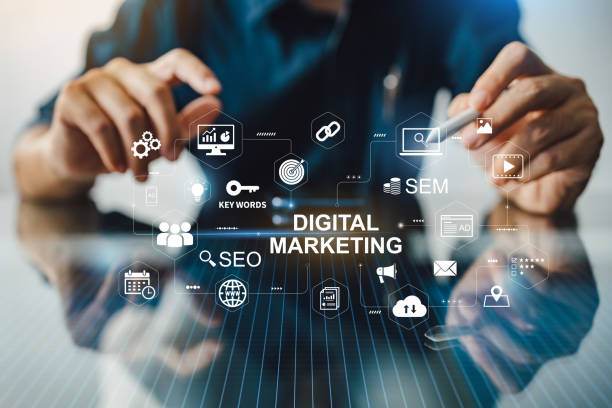Search results: 191
- Teacher: Mr. Ambrish Gangal [CSIT]
- Teacher: Sonia Deshmukh [CSIT]
Course Objectives
1. To understand consumer behavior and explain the consumer decision making process
2. To define external and internal influences on buying behavior
3. To provide an understanding of integrated marketing communications (IMC) and its influences on other marketing functions and other promotional activities.
4. Help to understand what advertising is and its role in advertising and brand promotion.
5. Understand the importance of message design and the creativity involved in message designing.

- Teacher: Mr. Anjan Kumar [MBA]
The specific objective of the Master's degree course in Marketing, Consumer Behaviour and Communication is the training of graduates with a specialized knowledge in the management of marketing and communication tools related to the branding and marketing of goods and services in the current social, cultural and economic context, with particular attention to the digital world and new media.
The training course focuses on the tools and methods of analysis that allow industrial, distribution and service companies to optimize their marketing and communication levers and the positioning of their products in the market, at the point of sale and on the web. Such knowledge, deepened with reference to the national and international dynamics related to trade and communication, together with the pertinent legal apparatus, will allow to acquire specific tools for a highly professional management of marketing and communication in three strategic areas, that of brand creation and management, that of its positioning in sales networks, whether owned and third parties, and in the web and digital media.
Design Thinking is a user-centric approach to innovation that aims to solve complex problems creatively. It involves five stages: Empathize, where you deeply understand users' needs; Define, where you frame the core problem; Ideate, where you generate a wide range of ideas; Prototype, where you create simplified models or solutions; and Test, where you experiment with these prototypes and gather feedback. This iterative process encourages continuous improvement, collaboration, and out-of-the-box thinking, ensuring that solutions are practical, innovative, and aligned with users’ real needs. It’s widely applied across industries for product development, services, and business strategies.
- Teacher: MS RUCHIKA VASHISHTH [ADMIN]
- Teacher: DR DILKESHWAR PANDEY [CSE]
- Teacher: DR (COL) AMIK GARG [Director]
- Teacher: DR MANOJ GOEL [Joint Director]
To help students understand digital and social media marketing practices.
To provide understanding of the concept of social media platforms
To impart learning on various digital channels and how to acquire and engage consumers
online.
To provide insights on building organizational competency by way of digital marketing
practices and cost considerations.
To develop understanding of the latest digital practices for marketing and promotion.
- Teacher: MS. PALLAVI SHARMA [CS]
- Teacher: Rahul Kumar [CS]
Course Objectives
1. To help Student understand the concept of Digital Marketing & E-commerce in today’s scenario
2. To enable student in creating and maintaining a good website and blog posts.
3. To make student understand the importance of SEO and Email Marketing in today’s modern world
4. To understand the functioning and importance of Social Media Marketing via various platforms
5. To understand various Analytics tools of online marketing


- Teacher: MR MOHIT TYAGI [ECE]
- Teacher: MS DIKSHA SINGH [ECE]
This course is specially designed for the first year Engineering students. It comprises of basic understanding of Electronics Engineering and their application in modern day technology.
Course Objectives:
1. To understand the basic concepts of IoT, followed by major components, its layer architecture and how IoT is impacting the industry in the various forms along with major applications.
2. To make students aware about basic concepts of cloud computing, its benefits and different applications along with insights of major service providers.
3. To understand the basic concepts of Blockchain and its underlying technologies with its implementation as cryptocurrencies.
4. To understand the concept of Additive Manufacturing, its applications in various fields and the basic concepts of drones, their assembly and government regulations involved.
5. To introduce students to the upcoming technology and to develop the required skills for practical applications.
Course Objectives:
1. To understand the basic concepts of IoT, followed by major components, its layer
architecture and how IoT is impacting the Industry in the various forms along with major
applications.
2. To make students aware about basic concepts of cloud computing, its benefits and different
applications along with insights of major service providers.
3. To understand the basic concepts of Blockchain and its underlying technologies with its
implementation as cryptocurrencies.
4. To understand the concept of Additive Manufacturing, its applications in various fields and
the basic concepts of drones, their assembly and government regulations involved.
5. To introduce students to the upcoming technology and to develop the required skills for
practical applications.
- Teacher: shruti.pandey
- Teacher: Dr. Narendra Kumar [ECE]
- Teacher: MR AMIT KUMAR [ECE]
- Teacher: MR VARUN GUPTA [EIE]
- Teacher: DR NATWAR SINGH RATHORE [EN]
- Teacher: DR NEERAJ KUMAR GUPTA [EN]
- Teacher: DR SURENDRA KUMAR TRIPATHI [EN]
UNIT-1: Energy Scenario: Classification of Energy, Indian energy scenario, Sectorial energy
consumption (domestic, industrial and other sectors), energy needs of growing economy, energy
intensity, long term energy scenario, energy pricing, energy security, energy conservation and its
importance, energy strategy for the future.
Energy Conservation Act 2001 and related policies: Energy conservation Act 2001 and its
features, notifications under the Act, Schemes of Bureau of Energy Efficiency (BEE) including
Designated consumers, State Designated Agencies, Electricity Act 2003, Integrated energy policy,
National action plan on climate change, ECBC code for Building Construction.
UNIT-2: Demand Side Management (DSM): Concept and Scope of Demand Side Management,
Difference between Energy Efficiency and DSM, Evolution of Demand Side Management, DSM
Strategy, Planning, Implementation and its application, Customer Acceptance & its implementation
issues, National and International Experiences with DSM, UDAY scheme and other government
initiatives for DISCOMs.
Energy Monitoring and Targeting: Defining monitoring & targeting, elements of monitoring &
targeting, data and information-analysis, techniques –energy consumption, production, cumulative
sum of differences (CUSUM). Energy Management Information Systems (EMIS)
UNIT-3: Energy Audit: Aim of energy Audit, Strategies of Energy Audit, Energy management
Team Consideration in implementing energy conservation Programme, Process flow diagram, Energy
Audit report format, Benchmarking and Energy Performance, Instruments for energy audit, Economic
analysis.
UNIT-4: System Audit of Mechanical Utilities: Pumps, types and application, unit’s assessment,
improvement option, parallel and series operating pump performance. Energy Saving in Pumps &
Pumping Systems. Bloomers (Blowers) types & application, its performance assessment, series &
parallel operation applications & advantages. Energy Saving in Blowers Compressors, types &
applications, specific power consumption, compressed air system & economic of system changes.
Energy Saving in Compressors & Compressed Air Systems Cooling towers, its types and
performance assessment & limitations, water loss in cooling tower. Case studies related to Energy
Audit & Management in Industries
UNIT-5: Energy Efficient Technology: Need for Energy Efficient Devices, Life Cycle Assessment,
Comparison between simple pay-back and life cycle cost assessment, Energy Efficient Motors-motor
losses and loss reduction techniques, determining and comparing motor efficiencies, motor efficiency
testing standards, BIS specification for Energy Efficient Motors, efficiency as a function of load,
Energy Efficient Lighting Sources-compact fluorescent lamp, light emitting diode, LED lamp, role of
voltage on the efficiency of lighting system, Importance of Automatic power factor controllers,
Variable Frequency Drives.
Course Objectives:
1. To facilitate software based learning to provide the required English Language proficiency to students.
2. To acquaint students with specific dimensions of communication skills i.e. Reading, Writing, Listening, Thinking and Speaking.
3. To train students to use the correct and error-free writing by being well versed in rules of English grammar.
4. To cultivate relevant technical style of communication and presentation at their work place and also for academic uses.
5. To enable students to apply it for practical and oral presentation purposes by being honed up
in presentation skills and voice-dynamics.
Course Objectives:
1. To facilitate software based learning to provide the required English Language proficiency to students.
2. To acquaint students with specific dimensions of communication skills i.e. Reading, Writing, Listening, Thinking and Speaking.
3. To train students to use the correct and error-free writing by being well versed in rules of English grammar.
4. To cultivate relevant technical style of communication and presentation at their work place and also for academic uses.
5. To enable students to apply it for practical and oral presentation purposes by being honed up
in presentation skills and voice-dynamics.
Demonstrate the knowledge of the basic structure, components, features and
generations of computers. Describe the concept of computer languages, language translators and construct
algorithms to solve problems using programming concepts. Compare and contrast features, functioning & types of operating system and
computer networks. Demonstrate architecture, functioning & services of the Internet and basics of
multimedia. Illustrate the emerging trends and technologies in the field of Information
Technology.

